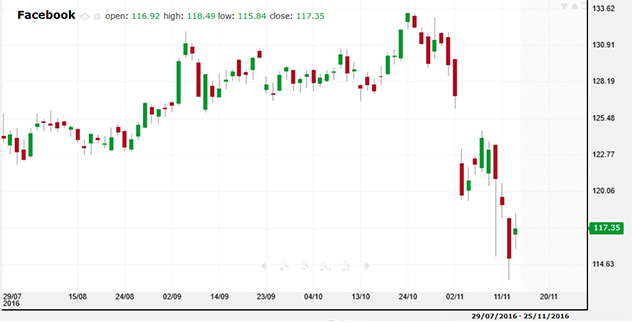This website uses cookies and is meant for marketing purposes only.
Gather around, because today we have an important topic to discuss: Fundamental analysis. Don’t worry, you don’t need a financial degree in order to learn how this strategy works or how you could implement it. All you need is to grasp the ‘fundamentals’, meaning the factors that impact a specific economy.
Not all traders use this type of analysis, and you might choose not to either, but you should still attempt to get the gist of it. Why? Because it plays an important role in the world of trading and is included in many trading strategies. Are you ready to see what fundamental analysis is about? Great, we’ll start with the basics.

Fundamental analysis is a bit like research. It involves the assessment of all sorts of data – economic, political and even social. Not any data of course, just the kind that can impact the supply and demand of a specific instrument. It’s quite simple to understand how supply and demand work as economic indicators. Figuring out what factors affect supply and demand is much trickier, but with a bit of practice and a bit of training, you will see it’s not too complicated.
The factors that you need to figure out are usually referred to as (surprise surprise) ‘fundamentals’. In theory, by analyzing these factors, traders can draw conclusions regarding the state of an economy or a company and use them to make informed trading decisions. For example, the level of employment can offer information regarding a country’s economy and - under certain conditions - can eventually affect the demand for that country’s currency.
Want an example? Here you go:
When trading forex, fundamental traders will try to assess how well an economy is doing in order to speculate whether the currency will strengthen or weaken. They work under the assumption that if a country’s economy is thriving, foreign investors and businesses will want to invest in it and will need local currency to do so. The result, according to this theory, is that the local currency will rise.
One of the most important tools for traders who implement fundamental analysis is an Economic Calendar. It essentially lists major economic events in numerous markets, announcements, profit reports and even speeches. This may sound incredibly simple, but the true power of the economic calendar is its ability to serve many relevant events in a single place, enabling traders to follow them without having to go through the laborious research themselves. This is a huge time saver, and the Economic Calendar at iFOREX also includes filters, enabling you to sort results according to date range or region.
There are many events listed on a standard economic calendar. We can’t possibly mention all of them, but we will look into a few of the better-known terms here.
GDP
GDP stands for Gross domestic product. You probably heard the term on the news. It’s basically a way to measure the market value of a country’s goods and services in a specific period (usually either quarterly or yearly). GDP is a way to assess how well – or how poorly – a specific economy is doing, and to measure its performance over time. If you still find this explanation confusing just remember three simple words: GDP measures growth.
We won’t bore you with all the different calculations that GDP involves, but on top of the standard GDP we’ve just described (also called nominal GDP per capita), there are two additional types of GDP you should be aware of.
Real GDP – This is essentially the standard, nominal GDP, but adjusted for price changes (meaning inflation or deflation). It’s called “real” because it offers a more realistic view of GDP over time.
GDP PPP per capita – PPP stands for Purchasing Power Parity. In this calculation, the regular GDP is divided by the average population for the specific year. The result offers a better comparison of living standards between nations.
Non-farm Payrolls
Non-farm payrolls (or NFP) is an estimation of payroll jobs at companies and government agencies in the United States, excluding farm employees. The actual number of non-farm payrolls as well as additional information regarding the employment situation are released by the US Department of Labour on the first Friday of every month at exactly 8:30 am EST. The data is always relevant to the prior month.
Many investors eagerly await this report every month. Why? Because it’s an excellent source of information regarding the current and possible future pace of the country’s economic growth. Changes to average hourly wages can offer hints regarding supply and demand in the US labor market. This makes the NFP a highly influential economic indicator.
Employment Monthly report
The Employment Monthly report (also known as the Labour Force Survey) is a major economic indicator that offers information regarding the level of employment and unemployment. It includes two rates:
Employment rate – The number of employees working in the nation's business and government agencies.
Unemployment rate – The number of unemployed people, represented as a percentage of the total labor force.
Interest rate announcements
It’s pretty clear why any change to a country’s interest rate is a major economic event. It affects everyone: buyers, sellers, exporters, importers, and is relevant to practically every industry. For forex traders, interest rates are extremely important in assessing the perceived value of a specific currency.

Central banks’ rate decisions
Central banks such as the BoJ (the Bank of Japan), the BoC (the Bank of Canada) and the BoE (the Bank of England) have scheduled meetings. While most of these meetings end with an unchanged interest rate, sometimes the bank will announce an interest rate decrease or increase. Such announcements can have a huge impact on the market.
What influences the bank’s decision? Many factors, but the possibility of inflation usually plays a central role.
Fed interest rate decisions
Any interest rate change is important, but none is as influential as decisions made by the Federal Reserve Bank in the United States. If you don’t understand why, try and remember how important the US Dollar is to the global economy. Investors from all over the world line up to listen to what the Fed’s Chair has to say and many people look for hints in any speech made by policy makers, hoping to get a clue on when and what the Fed will decide to do.
Even if the Fed decides to leave the interest rate unchanged, the market could react, especially if many investors were expecting a change.
Company quarterly earnings reports
Quarterly earnings reports are released by public companies as a display of their performance. They include a long list of numbers and facts including earning per share, net income, net sales and earnings from continuing operations. Fundamental analysists use the earnings reports to assess the financial strength of a company. For example, by looking at earning per share, an investor could compare market capitalization with earnings.
These reports are released every quarter and refer to the previous quarter. The results are not the most important thing about these reports. The most important thing is how the company is doing compared to market expectations.
Confused? It’s actually quite simple. If the company releases a report suggesting that it’s doing better than what analysts expected, the market will be surprised for the better. That’s obvious, right? But think about this: If a company releases data suggesting it’s doing badly, but not as bad as analysts expected, the market will also be pleasantly surprised.
You see: The numbers aren’t all that matter, you also have to take into account how they compare with market expectations.
Consumer Price Index (CPI)
CPI measures the average price of a specific basket of goods and services. Changes in CPI reflect the rate of inflation. Because inflation has a huge impact on the market, this is a very important indicator for investors.
Consumer Confidence Index (CCI)
CCI is a very special indicator because it attempts to measure an unquantifiable thing: How optimistic are consumers? How does CCI accomplish this? By understanding how consumers spend and save. The idea behind the CCI is simple: The more confident people feel about the economic situation, their jobs and their incomes, the more likely they are to buy stuff.
Retail sales
Retail sales sounds like something shops do, and that’s actually exactly what this indicator is about. It counts the receipts at stores that sell goods. This offers important hints regarding consumer spending – a major part of every modern economy. How can such data influence the market? Let’s look at shares for example. Strong economic growth tends to mean substantial corporate profits and potentially higher share prices.
Retail sales offer both a glimpse of the wider picture and show trends among various retailers, assisting investors in recognizing investment opportunities before quarterly company reports.
Industrial production
It’s very easy to guess what this indicator is about; the output of a country’s factories, utilities and mines. By measuring industrial production, investors can get an idea of how the economy is doing, which in turn affects investments. Just think about it… this valuable report enables you to assess which sectors of the economy are growing and which are sluggish.
Furthermore, industrial production can potentially predict changes in employment, income and earnings. That’s extremely important information for traders.
You might think that the earnings reports are straightforward: A company reports great earnings, the share price rises. However, things can be a little bit more complex.
Just look at Facebook as an example. On November 2016, the company reported Q3 sales that grew 56% - well beyond expectations. You’d think investors would be overjoyed.
Well, think again.
Shares crashed and if you wonder why, you’re going to need to squint your eyes, because the answer is in the fine print. The problem in this case wasn’t the company’s profits – they were great. The issue was with the company’s projections. When releasing the data, Facebook’s Chief Financial Officer said that revenue growth rates are likely to decrease substantially in 2017. What happened next? Just look at the chart below.

As you’ve seen above, there is a lot of fundamental data available online. One of the biggest challenges you will face is having to compile and study all of it. A single report is easy to read and grasp – but you still need to figure out how to incorporate it within an economic overview. And what happens when there are 50 reports to analyze? If you want to save some time, you can check out our daily market analysis and find insights regarding several leading instruments.
Join iFOREX to get an education package and start taking advantage of market opportunities.